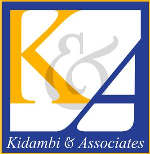I. DOL Interim Final Rule on Computation of Prevailing Wage Levels
The Department of Labor is issuing rules amending the regulations governing permanent labor certifications and Labor Condition Applications to incorporate changes to the computation of prevailing wage levels. The IFR will be published today, 10/8/20, and will be effective on the date of publication. This rule revises regulations for Prevailing Wage computation. Click here for copy of DOL interim final rule (IFR). The rule will immediately have the following effect:
- Prevailing wages are computed by assessing percentiles of the average wage for the offered occupation. The IFR amends the computation of prevailing wage levels, resulting in higher prevailing wages for all occupations for each OES-based wage level in the following ways:
- Level I wage is increased from 17th percentile to 45th percentile;
- Level II wage is increased from 34th percentile to 62nd percentile;
- Level III wage is increased from 50th percentile to 78th percentile; and
- Level IV wage is increased from 67th percentile to 95th percentile.
- This rule will only apply to applications for prevailing wage determination (PWD) pending with the NPWC as of the effective date of the regulation; applications for prevailing wage determinations filed with the NPWC on or after the effective date of the regulation; and LCAs filed with DOL on or after the effective date of the regulation where the OES survey data is the prevailing wage source, and where the employer did not obtain the PWD from the NPWC prior to the effective date of the regulation.
- DOL will not apply the new regulations to any previously-approved prevailing wage determinations, permanent labor certification applications, or LCAs, either through reopening or through issuing supplemental prevailing wage determinations or through notices of suspension, invalidation, or revocation.
- Employers that rely on LCAs or PWDs will see an immediate increase to the wages associates with each wage level. This will effectively increase the “required wage” associated with H-1B, H-1B1, and E-3 benefit requests, as the “required” wage is defined as the higher of the actual wage and the prevailing wage. The IFR will result in higher wages associated with employment-based immigrant visa petitions that rely on OES-based PWD applications.
II. DOL Issues Implementation FAQs on Interim Final Rule on Computation of Prevailing Wage Levels
DOL OFLC issued FAQs on the implementation of the Interim Final Rule, Strengthening Wage Protections for the Temporary and Permanent Employment of Certain Aliens in the United States. The IFR will be published in the Federal Register today, October 8, 2020.
III. USCIS Interim Final Rule Revising Definition of “Specialty Occupation”
USCIS issues interim final rule (IFR) which revises the definition of the term “specialty occupation,” among other changes to the H-1B regulations. The IFR will be published in the Federal Register today, 10/8/20, and will be effective 60 days after publication.
This rule revises regulations regarding the H-1B non-immigrant visa program. The rule’s changes to the H-1B program restrict eligibility for the program in several ways, including:
- Revising the definition of H-1B specialty occupation to include the requirement of a specific relationship between the required degree field(s) and the duties of the offered position. In other words, persons with unrelated degrees (e.g., BS/MS in Mechanical Engineering for a Software Engineer position) will no longer qualify, or find it very hard to show that they are qualified to perform the duties of the position. While this does not offer clarity on how the Service is likely to treat “experience” evaluations, based on current trends, it will become harder to use experience when documenting eligibility
- The rule also restores the requirement that employers provide contracts, work orders, itineraries or similar evidence to prove employer-employee relationship when sending H-1B workers to third party worksites. This requirement was defeated in federal court, and earlier this year DHS retracted its memo enforcing this requirement for third party placements, but this rule restores this requirement
- The rule reduces the current three-year maximum validity period to one year. This is similar to what is currently the rule when extending O-1 Visas
- It also increases and expands DHS’ power to determine compliance with worksite inspections and to oversee compliance before, during, and after an H-1B petition is approved. Inspections may be conducted at an employer’s headquarters, satellite locations, and work sites, including third-party worksites. USCIS will have the authority to deny or revoke H-1B petitions if it determines the employer or third party fails or refuses to cooperate with site visits.
